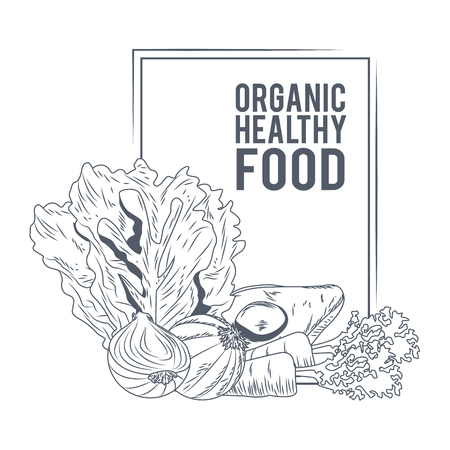Introduction to Eco-Friendly Food Packaging in India
In recent years, India has witnessed a remarkable shift towards eco-friendly food packaging, driven by growing environmental concerns and consumer awareness. As the harmful impacts of plastic waste become increasingly visible in our cities, rivers, and farmlands, both businesses and individuals are seeking sustainable alternatives that resonate with Indian values and traditions. Historically, India has always embraced natural packaging solutions, such as banana leaves, sal leaves, and earthen pots, which not only kept food fresh but also promoted zero-waste living. Today, these age-old practices are gaining renewed attention as modern consumers demand plastic-free choices for daily use. This new consciousness is shaping the food industry’s approach to packaging, blending ancient wisdom with innovative green technologies to address the urgent need for environmentally responsible solutions.
Traditional Indian Packaging Alternatives
India has a rich heritage of using indigenous, eco-friendly materials for food packaging long before the advent of plastic. Many of these traditional methods are being rediscovered and appreciated for their sustainability, cultural value, and low environmental impact. The use of natural packaging is deeply rooted in Indian customs, festivals, and daily life, especially in rural areas and local markets.
Popular Traditional Packaging Materials
| Material | Common Uses | Cultural Significance |
|---|---|---|
| Banana Leaves | Serving meals (especially South Indian cuisine), wrapping snacks like idlis and sweets | Symbolizes purity and hospitality; widely used during festivals and weddings |
| Sal Leaves | Packing street foods like momo, samosa, or chaats; making disposable plates (patravali) | Eco-friendly alternative to plastic plates; significant during religious rituals |
| Clay Pots (Kulhads) | Serving tea (chai), curd, desserts like mishti doi | Promotes earthy aroma and taste; supports local artisans; seen as a symbol of traditional India |
| Jute Bags | Packing grains, pulses, fruits, vegetables; shopping bags in local bazaars | Sustainable farming product from Bengal & Assam; represents resilience and eco-conscious living |
The Enduring Value of Traditional Packaging
These natural alternatives are not only biodegradable but also support the livelihoods of rural communities and artisans across India. In many states, local governments and NGOs are encouraging the revival of such practices as part of “Vocal for Local” initiatives. By using materials like banana leaves or clay pots, food remains free from harmful chemicals while connecting consumers to India’s rich culinary traditions.
Adapting Tradition for Modern Needs
With growing awareness about plastic pollution, there is renewed interest in scaling up these indigenous packaging solutions for urban markets. Startups and restaurants are increasingly adopting leaf plates and clay cups to offer an authentic Indian experience while staying eco-friendly. These practices bridge the gap between age-old wisdom and contemporary sustainability needs in India’s dynamic food sector.

3. Innovations and Start-up Stories
Across India, a new wave of eco-conscious entrepreneurs is transforming the food packaging landscape by introducing sustainable alternatives that are both innovative and culturally relevant. These start-ups and innovators are responding to the urgent need for plastic-free solutions by harnessing indigenous resources and traditional wisdom, creating packaging materials that are biodegradable, compostable, and plant-based.
Leading the Way with Bagasse Packaging
Start-ups like Ecoware and Chuk have pioneered the use of bagasse—a fibrous residue left after extracting juice from sugarcane—to manufacture sturdy, disposable plates, bowls, and containers. This not only utilises agricultural waste but also offers an affordable alternative to single-use plastics. Bagasse products decompose naturally within weeks, making them ideal for Indias bustling street food scene and large-scale events where disposables are widely used.
Areca Leaf Plates: A South Indian Tradition Reinvented
Innovators in southern India are leveraging the abundant supply of areca palm leaves to create elegant plates and serving dishes. Brands like Leafy Tales and Vistaraku employ local artisans to collect fallen leaves, which are then washed, pressed, and shaped into tableware without any chemicals or additives. These biodegradable plates are not only sturdy and microwave-safe but also reflect Indian traditions of serving food on natural leaves during festivals and community gatherings.
Beyond Plates: Edible and Compostable Packaging Solutions
The innovation doesn’t stop at plates and bowls. Several start-ups are experimenting with edible cutlery made from grains, as well as compostable films derived from corn starch, cassava, or seaweed. For example, Bakeys has introduced spoons made from millet flour that can be eaten after use or safely composted. Other companies are developing water-resistant paper wraps and bags coated with natural waxes or resins, catering to both modern retail chains and local kirana stores seeking sustainable options.
This surge in homegrown solutions demonstrates how Indian ingenuity is meeting the global challenge of reducing plastic waste while embracing cultural values of frugality, resourcefulness, and environmental stewardship.
4. Government Policies and Local Initiatives
India has taken significant steps to address the plastic pollution crisis through robust government policies and grassroots initiatives. In 2022, the Government of India implemented a nationwide ban on selected single-use plastics (SUPs), such as straws, cutlery, and packaging films, under the Plastic Waste Management Amendment Rules. This policy aims to drastically reduce non-biodegradable waste, encouraging industries and consumers to shift towards eco-friendly alternatives. The table below summarises key government actions and local efforts:
Initiative |
Description |
Impact |
|---|---|---|
Single-Use Plastic Ban |
Prohibits manufacturing, import, stocking, distribution, sale and use of identified SUP items. | Significant reduction in plastic litter; increased demand for sustainable packaging. |
Incentives for Eco-Friendly Packaging |
Tax rebates and subsidies for businesses adopting compostable or biodegradable packaging solutions. | Encourages start-ups and MSMEs to innovate in green packaging materials like bagasse or areca leaves. |
Grassroots Movements |
Community-led campaigns promoting cloth bags, banana leaves, and other traditional packaging at local markets. | Boosts awareness, reduces dependency on plastics at the household level. |
Public-Private Partnerships and Awareness Drives
The government collaborates with private companies and NGOs to scale up adoption of eco-friendly packaging. Initiatives such as ‘Swachh Bharat Abhiyan’ have incorporated plastic waste management into their framework. Several states—like Maharashtra and Tamil Nadu—have launched state-specific bans and incentives tailored to local industries. Furthermore, educational campaigns in schools and colleges foster early adoption of plastic-free habits among youth.
Local Success Stories
Cities like Bengaluru have seen successful implementation of compostable packaging in food delivery services. Rural communities in Kerala are reviving the use of coconut shells and palm leaves for serving and packing food. These examples showcase how combined policy support and community participation are driving a cultural shift towards sustainable consumption across urban and rural India.
5. Challenges and Opportunities in Adoption
While the movement towards eco-friendly food packaging without plastic is gaining momentum across India, several challenges still stand in the way of its mass adoption. One of the primary hurdles is cost. Sustainable alternatives such as bagasse containers, banana leaf wraps, and edible cutlery often come at a higher price point compared to conventional plastics. This difference in cost can be a significant concern for small-scale businesses, kirana store owners, and local street food vendors who operate on thin margins.
Logistics and Scalability Issues
Another critical challenge lies in logistics and scalability. The production and distribution infrastructure for eco-friendly packaging materials is not yet as widespread or robust as that for plastics. For example, rural suppliers may struggle to source enough raw materials or face difficulties in transporting finished products across Indias diverse geography. Additionally, eco-friendly packaging options often have shorter shelf lives or require special storage conditions due to their biodegradable nature.
Role of FMCG Brands
Leading FMCG brands in India are beginning to recognize their responsibility and influence in this space. Companies like ITC, Dabur, and Britannia are piloting initiatives that incorporate biodegradable or compostable packaging. Their support can help drive economies of scale, bring down costs, and set industry standards for sustainability. Such actions also inspire confidence among smaller players to follow suit.
Kirana Stores and Street Food Vendors: Grassroots Change
Kirana stores and street food vendors are the backbone of India’s food retail ecosystem. While many face financial constraints, there is growing consumer demand for plastic-free packaging. Some innovative vendors have started using newspaper wraps, cloth bags, or reusable steel tiffins (dabba) to serve customers. Government schemes and NGO-led awareness campaigns are also supporting grassroots adoption through subsidies and training programs.
Despite these challenges, the opportunities for growth are substantial. As awareness spreads and supply chains mature, costs will likely decrease and accessibility will improve. Collaborative efforts between government bodies, large FMCG brands, kirana stores, and street food vendors can accelerate the transition towards a more sustainable future in Indian food packaging.
6. The Road Ahead for Sustainable Packaging
As India advances towards a greener future, the food packaging landscape is witnessing rapid innovation driven by both tradition and technology. The next wave of sustainable packaging goes beyond simply eliminating plastic—it involves reimagining the entire value chain with eco-friendly alternatives that resonate with Indian values and consumer preferences.
Emerging Trends Shaping the Future
The push for sustainability is inspiring startups and established brands to invest in biodegradable materials like bagasse, areca palm leaves, rice husk, and bamboo. These indigenous resources not only reduce environmental impact but also support local farmers and artisans. Innovations such as edible cutlery, compostable films made from starch or seaweed, and water-based inks are gaining traction in urban and semi-urban markets. Increasingly, QR-coded smart packaging provides transparency on sourcing and eco-scores, empowering consumers to make informed choices aligned with their eco-conscious lifestyle.
Collaborative Models Driving Change
Collaboration is at the heart of Indias sustainable packaging revolution. Government agencies, NGOs, food producers, and packaging innovators are joining hands through public-private partnerships and grassroots initiatives. For example, city-level waste management projects in Bengaluru and Pune promote the segregation and recycling of bio-based materials. Community-driven collection systems ensure that post-consumer packaging is either composted or upcycled, closing the loop for a circular economy model unique to Indian cities.
Ayurveda-Inspired & Organic-Friendly Packaging
India’s heritage offers profound inspiration for sustainable solutions. Ayurveda-inspired packaging integrates natural antimicrobials like neem leaves or tulsi extracts into wrapping materials, extending shelf life naturally while preserving food quality without synthetic preservatives. Brands catering to organic and health-focused consumers are opting for unbleached paper wraps, jute pouches, and plant-based coatings—reflecting the holistic philosophy of ‘Ahimsa’ (non-harm) in every aspect of food handling.
Empowering a Greener Ecosystem
The journey ahead will see more food businesses aligning with international certifications such as BIS/ISI eco-labels or FSSAI’s guidelines on green packaging. As consumer awareness grows—especially among the youth—the demand for traceable, ethical, and planet-friendly packaging will fuel further innovation. By blending modern science with time-tested Indian wisdom, India’s food industry is poised to lead the way in sustainable packaging across Asia.
Towards a Plastic-Free Tomorrow
India’s commitment to eco-friendly packaging is not just a trend but a movement rooted in cultural ethos and collective action. With continued collaboration between government bodies, private enterprises, and conscious citizens, India’s path towards plastic-free food packaging will inspire global change—nurturing both people’s health and Mother Earth for generations to come.


